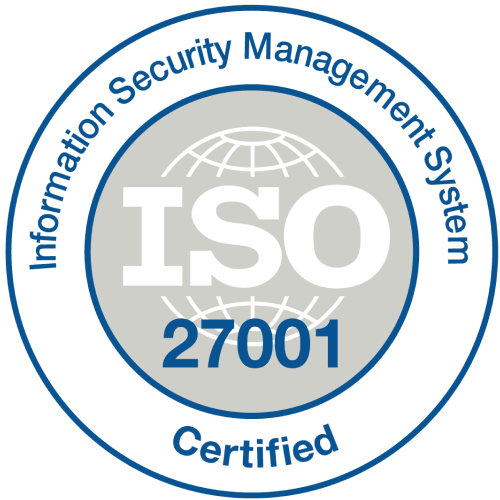
What is the performance management cycle?
The performance management cycle is a continuous process used by organizations to guide, assess, and improve employee performance in alignment with organizational goals and business objectives. Rather than being a once-a-year event, it’s an ongoing loop that helps managers and employees work together to set clear goals. The aim is to ensure that individual contributions support broader strategic goals while enabling employees to grow in their roles.
At its core, the performance management cycle includes several structured phases that build on one another: planning, monitoring, reviewing, and rewarding. These performance management cycle steps provide a framework that helps HR teams and managers maintain clarity around expectations and results, leading to effective performance management. Each step plays a critical role in developing a workplace where continuous feedback and support are part of the day-to-day experience.
Unlike traditional appraisal systems that focus only on outcomes, the modern employee performance management and employee evaluation process emphasizes open communication, goal alignment, and employee development. With the support of digital performance platforms, many companies are evolving this cycle into a more dynamic and employee-centric approach.
By embedding this process into everyday workflows, businesses not only foster accountability but also promote growth, engagement, and productivity. A well-executed performance management cycle plan ensures that performance is not just managed but actively cultivated to improve employee performance across all levels of the organization.
Key takeaways from the blog
- The performance management cycle is a structured approach that aligns employee performance with business strategy through four key stages.
- SMART goal-setting, regular feedback, and DEI practices, alongside performance management software, enhance the effectiveness of your performance management process.
- Using performance platforms and training managers boosts review quality while maintaining a human-centered approach.
The performance management cycle model
The performance management cycle model outlines a structured approach that organizations use to manage employee performance throughout the year. This model acts as a roadmap that connects daily activities to long-term business outcomes, supporting effective performance management systems. It’s not just a framework—it’s a rhythm that blends goal setting, consistent feedback, performance measurement, and development planning into a continuous flow.
The model typically begins with clear goal setting in performance management, ensuring employees understand what’s expected and how their goals tie into organizational priorities, which aligns with the performance management cycle definition.
From there, managers actively monitor progress, provide coaching, and are responsible for setting performance expectations and making real-time adjustments. Regular check-ins replace outdated once-a-year evaluations, creating a more responsive and transparent performance review cycle.
What makes this model effective is its adaptability. Companies can customize it based on their size, culture, and the type of performance management system they adopt. Some may follow monthly or quarterly meetings, while others integrate feedback weekly. Modern performance platforms support this flexibility by allowing HR teams and leaders to document conversations, update goals, and track achievements efficiently.
A well-integrated performance management cycle model doesn’t just measure output—it supports ongoing development and accountability. It helps teams pivot when needed and ensures that both strengths and gaps are addressed before they impact results, supporting personal and professional growth. When implemented thoughtfully, this model becomes a strategic asset for both employees and leadership.
Why is the performance management cycle important in business?
The performance management cycle is more than just an HR process—it's a strategic business function that influences growth, alignment, and employee success. Creating a structured rhythm for goal setting, feedback, and improvement brings clarity to both managers and employees. When implemented effectively, it becomes essential for driving performance, engagement, and fostering a positive work environment, resulting across the company.
1. Aligns individual goals with organizational strategy
The cycle ensures that employee objectives are directly linked to broader company goals. This alignment prevents disconnects between daily work and long-term vision, playing a crucial role in aligning employee success. It helps teams stay focused on high-impact tasks that support business growth and innovation, paving the way for future development opportunities.
2. Promotes a culture of continuous feedback and improvement
One of the core benefits of the performance management process is how it normalizes regular conversations about progress. Ongoing feedback—rather than one-off annual reviews—encourages timely recognition and helps in encouraging employees to course-correct before problems escalate. This culture of continuous performance management reduces confusion and builds trust between employees and managers.
3. Strengthens employee development and retention
The cycle highlights skill gaps and potential early, which supports proactive development. Employees who receive timely coaching and support feel valued and are more likely to stay, which can boost employee performance and grow with the company. This approach helps HR teams build internal talent pipelines that align with employee development goals rather than relying solely on external hires.
4. Drives accountability and boosts engagement
With well-defined expectations and structured check-ins, employees are more accountable for outcomes. They know what success looks like and how their work contributes. This sense of ownership increases motivation, leading to stronger commitment and better performance throughout the performance review cycle.
5. Enables data-driven management decisions
Every stage in the performance management cycle generates valuable insights about employee performance, challenges, and trends. This data supports more objective decisions on promotions, succession planning, and identifying cases of suboptimal performance for performance-based rewards. It also helps HR fine-tune the type of performance management system to suit evolving business needs.
The 4 core stages of the performance management cycle
The performance management cycle is built on four key stages that work together to support continuous improvement and alignment. Each stage plays a specific role in ensuring that employees are clear on expectations, receive regular feedback, and feel recognized for their contributions. Together, they create a balanced system for tracking and nurturing performance over time.
1. Planning
This stage sets the foundation by defining clear, measurable objectives for each employee. It includes goal setting in performance management to ensure alignment with team and company priorities. Planning also involves outlining expectations, timelines, and success metrics. When done right, it gives employees a focused roadmap for the cycle ahead.
2. Monitoring
In this stage, managers actively track progress and provide regular feedback. Ongoing communication helps identify challenges early and keeps employees aligned with their goals. Using performance platforms can streamline this step by documenting updates and coaching moments. Monitoring ensures flexibility while keeping performance visible throughout the cycle.
3. Reviewing
Reviewing involves evaluating the outcomes of the employee’s efforts against the set goals. It’s not just about rating performance—it’s about understanding context, progress, and growth. A strong performance review cycle highlights achievements and areas for improvement. It also feeds into decisions around promotions, development, or next steps.
4. Rewarding
This stage focuses on recognizing and reinforcing strong performance. It includes financial rewards, promotions, or growth opportunities based on merit. A well-structured reward phase supports motivation and retention. It closes the loop of the performance management process by valuing both effort and outcomes.
How does the cycle aligns employee goals with organizational strategy?
The performance management cycle isn’t just about tracking individual achievements—it’s a strategic mechanism to keep employee efforts aligned with business goals. When used effectively, the typical performance management cycle operates as a continuous cycle that connects day-to-day tasks with long-term company objectives. This alignment ensures that every team and every person contributes to the bigger picture.
- Goal setting starts with strategy: The planning phase begins by translating company priorities into team and individual goals. This ensures that employees aren’t working in silos but moving in the same direction. It gives their work context and relevance.
- Creates role clarity at every level: Each employee understands their specific role in driving business outcomes. The cycle ensures that even operational tasks are linked to strategic goals. This clarity minimizes duplication and misalignment.
- Enables regular strategic check-ins: Through monitoring and feedback, managers can recalibrate goals based on shifting business needs. It keeps performance dynamic, not rigid. These check-ins maintain alignment even in changing environments.
- Supports cross-functional coordination: By aligning individual goals to department and company objectives, the cycle encourages collaboration. Teams can better coordinate efforts when they understand shared targets. This reduces conflict and increases efficiency.
- Links outcomes to strategic rewards: The rewarding stage ties incentives to strategic impact, not just task completion. Employees are motivated to prioritize work that drives business value. This ensures high-impact work is consistently recognized.
- Drives accountability to business metrics: The cycle uses measurable targets tied to key performance indicators. Employees track their progress toward outcomes that matter to the business. This builds a culture of ownership and strategic accountability.
Smart goals and performance planning: Laying the right foundation
Setting the right foundation in the performance management cycle starts with clear, focused planning—and that’s where SMART goals come in. These goals help ensure that employee objectives aren’t vague wishes, but concrete targets with structure. With SMART goals driving the process, performance planning becomes purposeful, measurable, and strategically aligned.
- Specific goals eliminate confusion: In performance planning, goals should clearly define what’s expected and why it matters. Specificity gives employees direction and avoids mixed messages. It also helps managers track progress without guesswork.
- Measurable metrics enable accountability: Without measurable outcomes, performance is difficult to evaluate. SMART goals bring in metrics—numbers, milestones, or deliverables—that make performance trackable. This aligns well with digital performance platforms that help document and visualize progress.
- Achievable goals motivate performance: Goals should stretch employees, but still be realistic within available resources and time. If goals are too ambitious, they can lead to disengagement. A balance between challenge and feasibility supports consistent progress.
- Relevant goals drive strategic alignment: Every goal should contribute to a broader team or business objective. This ensures that performance isn’t just effort-based—it’s impact-driven. Relevance is what ties goal setting in performance management to the company’s bottom line.
- Time-bound targets create urgency: SMART goals include a deadline or timeframe to avoid endless delays. Time constraints add structure and make it easier to plan check-ins during the performance review cycle. They keep employees focused and moving forward.
How to train managers for effective performance conversations?
Training managers for effective performance conversations is essential for a smooth and impactful performance management cycle. When done well, these conversations drive employee growth, strengthen trust, and support better decision-making through motivating reward systems. Without proper training, they risk becoming uncomfortable, vague, or unproductive.
- Teach the importance of ongoing dialogue: Managers should be trained to treat performance discussions as regular conversations, not just annual events. This encourages real-time feedback and improvement. It supports the performance management process by making feedback part of everyday work.
- Coach them on active listening skills: Effective performance conversations require more listening than lecturing. Managers need to understand employee perspectives, concerns, and motivations. Active listening builds trust and helps uncover the root causes of performance issues.
- Provide frameworks for structuring conversations: Many managers struggle because they don’t know how to structure feedback. Training should introduce simple models like SBI (Situation-Behavior-Impact) or GROW (Goal-Reality-Options-Will). These frameworks offer clarity and keep conversations focused.
- Train for balanced, constructive feedback: Performance discussions should highlight both strengths and areas for improvement. Managers must learn how to deliver critical feedback respectfully, with examples. This ensures the conversation feels fair and developmental, not confrontational.
- Reinforce alignment with company goals: Managers should be trained to connect feedback to organizational priorities. Conversations should link individual performance to team impact and company strategy. This keeps the performance review cycle grounded in real business outcomes.
Common mistakes in the performance management cycle (And how to fix them)
Even with the best intentions, the performance management cycle can go off track if common pitfalls aren’t addressed. From vague goals to one-sided reviews, these mistakes can reduce the cycle to a check-the-box task. Here are seven common errors—and how to fix them—to make the cycle more effective and meaningful.
- Setting vague or unrealistic goals: Without clear and achievable goals, employees may feel lost or overwhelmed. Fix this by using SMART goals to create direction, relevance, and measurable outcomes. Effective goal setting in performance management is the foundation for success.
- Treating performance as a once-a-year event: Annual reviews alone don’t support real-time performance needs. Replace this with frequent check-ins and feedback loops. A continuous performance review cycle builds trust and drives steady improvement.
- Failing to train managers for effective conversations: Unskilled feedback can damage morale or create confusion. Train managers to give clear, respectful, and constructive input using structured methods. This strengthens the performance management process at every level.
- Ignoring employee input and perspective: Conversations that are one-sided can lead to disengagement. Managers should actively listen, ask questions, and involve employees in evaluating their own progress. This two-way communication fosters collaboration and ownership.
- Lack of alignment with business strategy: Goals disconnected from organizational priorities waste time and energy. Use the cycle to tie individual objectives to team and business goals. This creates strategic focus across all stages of the performance management cycle.
- Inconsistent use of performance platforms: Some teams rely on spreadsheets, while others use advanced tools. Inconsistency makes tracking and analysis difficult. Standardize your performance platforms to improve clarity, documentation, and accountability.
- Overlooking the reward and recognition phase: Without meaningful rewards, performance efforts can feel unnoticed. Recognize achievements both formally and informally to reinforce what good looks like. This final stage of the type of performance management system boosts morale and retention.
Measuring the success of your performance management strategy
Measuring the success of your performance management strategy is just as important as designing it. Without data and insights, it's hard to know if your efforts are making a difference or just creating extra admin work. Here are five practical ways to track whether your ongoing process of the performance management cycle is truly working.
- Track goal completion rates: If employees consistently meet or exceed their targets, your planning and execution are likely effective. Use performance platforms to monitor this data in real time. High goal achievement indicates alignment and clarity in the performance management process.
- Monitor employee engagement and satisfaction: Surveys and feedback can reveal whether employees feel supported, heard, and motivated. If performance conversations feel one-sided or unclear, engagement will drop. Positive engagement scores signal that your performance review cycle is being handled thoughtfully.
- Evaluate the quality of manager-employee conversations: Great performance strategies depend on meaningful dialogue. Audit feedback sessions, or get feedback from employees on manager effectiveness. Training managers well and tracking their progress boosts long-term outcomes.
- Assess alignment with business outcomes: Link individual performance to team KPIs and company goals. If high-performing teams are also driving key business results, your strategy is on point. This shows that your goal setting in performance management is properly connected to your strategic vision.
- Measure retention and internal mobility: A successful system should motivate and retain top talent. Look at turnover rates and how often employees are promoted or shifted into new roles. Strong performance systems support growth and reduce costly attrition.
How DEI considerations fit into the performance cycle?
Integrating Diversity, Equity, and Inclusion (DEI) into the performance management cycle is essential for fostering a fair and engaging workplace. By embedding DEI principles throughout the cycle, organizations can ensure that all employees are evaluated equitably, feel valued, and are provided with equal opportunities for growth. Here's how DEI considerations fit into each stage of the performance management cycle:
1. Planning: Establishing inclusive goals
In the planning phase, it's crucial to set clear, specific, and measurable goals that are free from bias. Utilizing SMART (Specific, Measurable, Achievable, Relevant, Time-bound) goals ensures that performance expectations are transparent and equitable for all employees. This approach minimizes ambiguity and helps prevent unconscious biases from influencing goal-setting.
2. Monitoring: Ensuring fair and ongoing feedback
During the monitoring stage, providing regular and constructive feedback is vital. Implementing 360-degree feedback mechanisms, which gather input from peers, subordinates, and supervisors, can reduce individual biases and offer a more comprehensive view of an employee's performance. This inclusive feedback approach promotes fairness and supports continuous development.
3. Reviewing: Conducting equitable performance evaluations
The reviewing phase should focus on objective assessments based on predefined criteria. Incorporating multiple perspectives and standardized evaluation tools can help mitigate biases. Regular audits of performance reviews can also identify and address any disparities in evaluations across different demographic groups.
4. Rewarding: Recognizing and compensating fairly
In the rewarding stage, it's important to ensure that recognition and compensation are distributed equitably. Analyzing reward patterns can help identify any unintended disparities. Aligning rewards with transparent performance metrics reinforces fairness and motivates all employees.
FAQs
1. What is the performance management cycle in brief?
The performance management cycle is a structured process used by organizations to plan, monitor, review, and reward employee performance. It helps align individual goals with company objectives, supports continuous feedback, and drives development. By following key performance management cycle steps, companies ensure accountability and engagement throughout the year while refining strategies based on outcomes.
2. What are the 4Ds of performance management?
The 4Ds refer to Define, Develop, Deliver, and Discuss. Define involves setting clear goals; Develop focuses on building skills and capabilities; Deliver means executing and achieving performance expectations; Discuss includes regular feedback and performance reviews. These elements guide a complete performance management process, encouraging improvement, accountability, and alignment with business priorities at every stage of the cycle.
3. How can HR teams improve manager capability in the review process?
HR teams can enhance manager capability through structured training, role-playing exercises, and coaching on conducting fair, clear, and constructive feedback sessions. Equipping managers with performance platforms and tools also standardizes review quality. Encouraging consistency in evaluation methods supports stronger performance review cycles and builds employee trust in the overall performance management approach.
4. How often should performance management reviews happen?
Performance management reviews should occur quarterly or biannually, with ongoing informal check-ins in between. This ensures feedback is timely, relevant, and actionable. A continuous performance review cycle promotes agility, goal alignment, and engagement. Regular evaluations allow companies to adjust objectives, support employee growth, and enhance performance monitoring to strengthen the overall type of performance management system used.
5. Can performance management be automated without losing the human touch?
Yes, when done thoughtfully. Automation through modern performance platforms helps streamline tracking, reminders, and documentation. However, human elements like empathy, coaching, and contextual understanding should remain central to the performance management cycle. Combining tech with personal interactions ensures that the process remains efficient while still supporting relationship-building and meaningful performance conversations.
Empower, Engage & Succeed with the Complete Employee Engagement Software
DISCOVER NOWGet breaking news and curated stories delivered to your inbox every day. Be the first to know what’s happening around the world



.svg)















.png)

